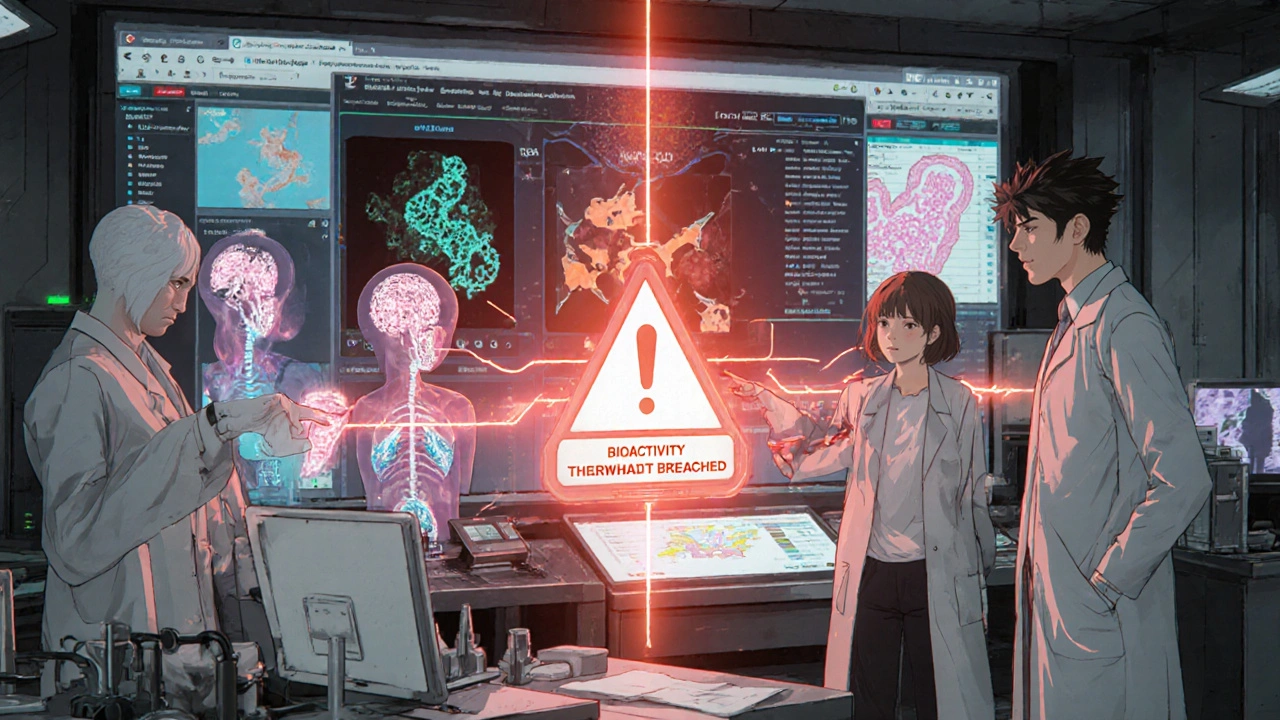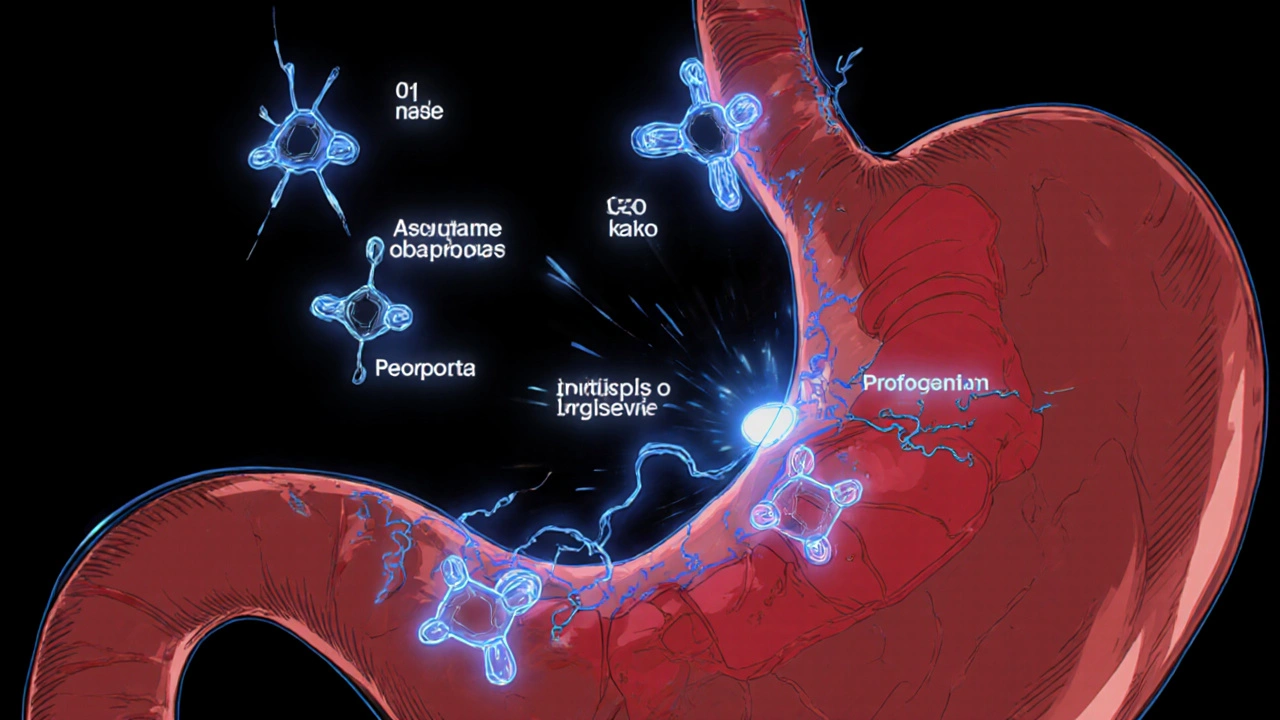When you take a pill, you think you’re swallowing just the medicine-the active ingredient that treats your condition. But that pill is mostly excipients. These are the fillers, binders, and coatings that make the drug stable, easy to swallow, or even taste better. They’re called ‘inactive’ because they’re not supposed to do anything therapeutically. But what if they’re not as harmless as we’ve been told?
What Exactly Are Excipients?
Excipients are the non-active parts of your medication. Think of them as the scaffolding around the real drug. In a typical tablet, excipients make up 60% to 99% of the total weight. Common ones include lactose (a sugar used as a filler), microcrystalline cellulose (a binder), magnesium stearate (a lubricant), and croscarmellose sodium (a disintegrant that helps the pill break apart in your stomach). Even food dyes like tartrazine can be part of the mix. The U.S. Food and Drug Administration (FDA) lists around 1,500 approved excipients across different routes of administration-oral, injectable, eye drops, and more. Each one has a safe concentration limit. For example, polysorbate 80 is fine up to 5% in pills but capped at 0.05% in IV solutions because higher levels can trigger immune reactions. For decades, these ingredients were assumed to be biologically inert. That’s why generic drug makers could swap one filler for another without proving it changed how the drug worked. But science is catching up.Excipients Aren’t Always Inert
A landmark 2020 study in Science turned the old assumption on its head. Researchers tested 314 excipients against 44 biological targets-things like receptors and enzymes in the human body. They found that 38 of them, including common ones like aspartame, sodium benzoate, and propylene glycol, actually interacted with those targets. Some of these interactions happened at concentrations you’d reach just by taking normal doses of medication. Aspartame, for instance, blocked the glucagon receptor at 8.5 micromolar. That’s not a high concentration-it’s easily reached in people who take pills containing aspartame as a sweetener. Sodium benzoate, used in some liquid medications, inhibited monoamine oxidase B at 320 nanomolar. That’s the same enzyme targeted by Parkinson’s drugs. Propylene glycol, found in many oral and topical products, hit monoamine oxidase A at 210 nanomolar. These aren’t random lab results. These are real, measurable biological effects. Dr. Giovanni Traverso, lead author of the study, put it plainly: “The blanket classification of excipients as ‘inactive’ is scientifically inaccurate for a meaningful subset of these compounds.” The FDA acknowledged this in its 2022 guidance, admitting that “the assumption of inertness for excipients may not hold for all compounds at all concentrations.”When Excipients Change, What Happens?
Not all excipient swaps are dangerous. Many generics work just fine with different fillers. But sometimes, small changes cause big problems. Take the 2018 recall of 14 generic versions of valsartan, a blood pressure drug. The active ingredient was unchanged. But a new solvent used in manufacturing-dimethylformamide-led to contamination with NDMA, a known carcinogen. The excipient change wasn’t the direct cause, but it created the conditions for contamination. The FDA had approved the switch because the excipient itself was considered safe. They didn’t test the new process. Another case: Aurobindo’s 2020 application for a generic version of Entresto was rejected. They replaced magnesium stearate with sodium stearyl fumarate. In lab tests, the new formulation released the drug 15% slower at stomach pH levels. That’s enough to affect how much of the drug gets absorbed. The FDA said: “We can’t assume bioequivalence without proof.” On the flip side, Teva’s 2021 generic of Jardiance swapped sodium starch glycolate for croscarmellose sodium as a disintegrant. Bioequivalence studies showed near-identical absorption-Cmax was 374 vs. 368 ng/mL, AUC was 4,215 vs. 4,187 ng·h/mL. No issues. The change worked. The difference? One was backed by data. The other wasn’t.
Regulatory Gaps and Real-World Risks
The FDA allows different excipients in most oral generics-as long as they don’t impact safety or efficacy. But proving that takes time and money. Generic manufacturers spend an average of $1.2 million and 18 months justifying a new excipient. Most rely on the FDA’s Inactive Ingredient Database (IID), which lists approved excipients and their safe limits. If your filler’s already on the list, you’re usually fine. But here’s the problem: the IID doesn’t track what happens when excipients interact with each other or with your body over time. It doesn’t account for individual differences-like allergies, gut health, or liver function. And it doesn’t screen for off-target biological activity. In parenteral (injectable), ophthalmic (eye), and otic (ear) drugs, the rules are stricter. You must match the brand-name product exactly. Why? Because these routes bypass the body’s natural filters. A tiny impurity or unexpected reaction can be dangerous. The European Medicines Agency (EMA) requires the same level of justification. But in the U.S., the system relies on trust-until something goes wrong. And it’s getting worse. In 2023, 17% of generic drug applications were rejected, mostly because of excipient issues. Forty-two percent of those rejections were due to insufficient safety data for new excipients. Thirty-eight percent were because concentrations were too high or too low.Who’s at Risk?
Most people won’t notice a difference. But some groups are more vulnerable. People with allergies might react to dyes or preservatives. Lactose-intolerant individuals could have digestive issues from tablets containing lactose. Diabetics might be affected by sugar-based fillers. Those with kidney or liver disease may struggle to clear certain excipients like propylene glycol or polysorbate 80. Even more concerning: some excipients may interact with other medications. Sodium benzoate, for example, might enhance the effect of sedatives or antidepressants by inhibiting monoamine oxidase. That’s not listed on the label. No one tells you. A 2023 FDA pilot program started monitoring high-risk excipients in orally disintegrating tablets-like aspartame and saccharin-after reports of rare but real hypersensitivity reactions in 0.002% of patients. That’s tiny, but it’s not zero.
The Future: More Science, More Scrutiny
The FDA is working on a new computational model to predict which excipients might interact with human biology. They’re also planning to update the IID with predicted tissue concentrations for each ingredient-so we’ll know not just if it’s safe, but where it goes and what it might touch. A proposed amendment to 21 CFR 314.94 could require all new excipients to be screened against 50 high-risk biological targets before approval. That would add $500,000 to $1 million to development costs per drug. It’s expensive-but necessary. Meanwhile, the International Pharmaceutical Excipients Council (IPEC) is pushing for concentration thresholds below which excipients are presumed inert. But critics say that’s too simplistic. Your body isn’t a lab rat. Your genetics, diet, and health status change how you process everything-even ‘inert’ stuff.What Should You Do?
You don’t need to panic. Most medications are safe. But here’s what you can do:- If you have unexplained side effects-rashes, stomach upset, headaches-ask your pharmacist: “What excipients are in this pill?”
- If you’re switching from brand to generic, and your symptoms change, don’t assume it’s all in your head. Ask for a comparison of excipients.
- For chronic conditions, especially if you’re on multiple drugs, consider asking for a formulation without common allergens like lactose, tartrazine, or aspartame.
- Check the FDA’s Inactive Ingredient Database if you’re curious about a specific ingredient. It’s public.
Are excipients really safe if they’re called ‘inactive’?
Not always. While most excipients are safe at approved levels, research shows some-like aspartame, sodium benzoate, and propylene glycol-can interact with biological targets at concentrations found in normal medication use. The term ‘inactive’ is outdated and misleading for certain compounds.
Can generic drugs have different excipients than brand-name versions?
Yes, for most oral medications. The FDA allows different excipients in generics as long as they don’t affect safety or efficacy. But for injectables, eye drops, and ear drops, the excipients must match the brand-name product exactly.
How do I know what excipients are in my medication?
Check the drug’s prescribing information or package insert. The FDA’s Inactive Ingredient Database (IID) also lists approved excipients by brand and generic name. Your pharmacist can help you look them up.
Can excipients cause allergic reactions?
Yes. Dyes like tartrazine, preservatives like parabens, and fillers like lactose or corn starch can trigger reactions in sensitive individuals. These are rare but documented, especially in people with existing allergies or intolerances.
Why don’t drug labels list excipients clearly?
Regulations require listing active ingredients prominently, but excipients are often buried in fine print or only available in full prescribing documents. This is changing, but slowly. Patients need to ask for this information-it’s not always easy to find.
Is there a list of dangerous excipients I should avoid?
There’s no official blacklist, but research has flagged certain excipients for concern: aspartame (for those with phenylketonuria or sensitivity), sodium benzoate (potential enzyme interactions), propylene glycol (in high doses or for those with liver issues), and tartrazine (linked to rare allergic reactions). If you have sensitivities, avoid these unless cleared by a doctor.


Arpita Shukla
November 12 2025So let me get this straight-we’ve been giving people pills full of aspartame and propylene glycol like they’re harmless candy coatings, and now we’re just finding out they might be quietly messing with our enzymes? No wonder I get migraines after switching generics. My pharmacist didn’t even know what I was talking about when I asked about excipients. This is insane.
And don’t get me started on lactose in every damn pill. I’m lactose intolerant, not a lab rat. Why isn’t this labeled like allergens in food? The FDA’s database is useless if you can’t find it without a PhD in pharmacology.